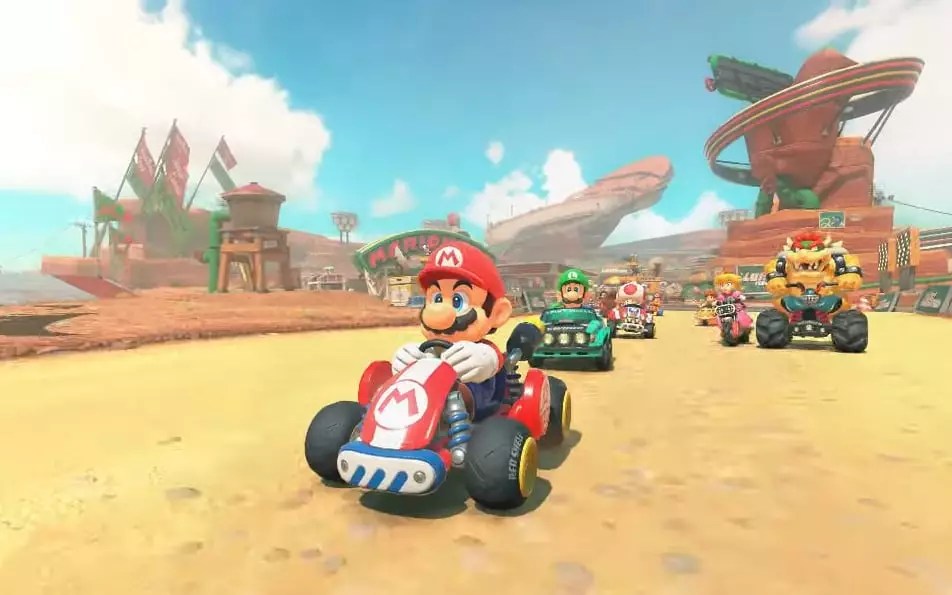For years, Nintendo has been synonymous with groundbreaking titles that redefine gaming. However, with the announcement of the Switch 2 and the highly anticipated Mario Kart 9, questions arise about whether this sequel can capitalize on the massive success of its predecessor, Mario Kart 8 Deluxe. With over 67 million units sold, Mario Kart 8 Deluxe isn’t just a game; it’s an institution. The challenge for Nintendo is formidable: how do they convince a gaming community already enamored with the existing title to invest in a new console, particularly when that console comes with a hefty price tag?
Former Nintendo employees Kit and Krysta recently shared their insights on this subject in their YouTube video, “The Problem with the New Mario Game on Switch 2.” Their concerns are significant. They note that the unabated success of Mario Kart 8 Deluxe, which continues to receive content updates and new features, could potentially overshadow the allure of a new installment. Their comments highlight a critical point in gaming marketing: when players are satisfied with what they have, introducing something new becomes a daunting task.
A Built-In Challenge: The Hill to Climb
Krysta’s observation about parents needing to justify spending $400 on a new console for their children, especially when the current setup works perfectly well at home, encapsulates a genuine concern. The prospect of having to purchase not only a new game but also an updated system creates a complex dilemma for many families. It raises an important question: Is the value proposition for Mario Kart 9 strong enough to sway budget-conscious consumers?
Indeed, Kit acknowledged the uphill battle faced by Mario Kart 9, citing the bar set by Mario Kart 8 Deluxe as unattainable in the minds of many consumers. With Nintendo’s goal to exceed the miraculous sales performance of 75 million combined units, it becomes evident that mere incremental improvements may not cut it. Consumers today are increasingly discerning, looking for innovative experiences that enhance gameplay, rather than just new iterations of beloved titles.
The Legacy of Mario Kart 8 Deluxe
To understand the daunting legacy that Mario Kart 9 must overcome, it is essential to recognize what made Mario Kart 8 Deluxe a phenomenon. The game captivated audiences with its excellent graphics, engaging gameplay, and robust online features. It became the go-to party game for families and friends alike, solidifying its place in the modern gaming lexicon. Nintendo’s lack of foresight about its potential merely showcases how a product can evolve beyond expectations and cultivate a dedicated fan base.
However, the stark contrast between the launch of Mario Kart 8 Deluxe and Mario Kart 9 is interesting. Before, Nintendo relied on the strength of their flagship franchise to bolster their new console’s appeal in a post-Wii U world. Fast forward to today, and the landscape has changed. Gamers are now more aware of what to expect, and brand loyalty isn’t as easily achieved. Kit and Krysta’s insights underline the fact that players want more than new tracks or characters; they want revolutionary experiences that challenge their expectations and keep them coming back for more.
Can Nintendo Innovate Again?
As Nintendo seeks to reposition Mario Kart 9 in an already saturated market, they must focus on innovative gameplay features that can differentiate the new title from its forerunner. They have a unique opportunity to leverage advanced technology to introduce elements such as immersive VR capabilities, cross-platform play, or augmented reality features that would reinvigorate interest among both dedicated fans and newcomers alike.
The need for innovation is echoed in discussions about other flagship Nintendo titles like The Legend of Zelda: Breath of the Wild, which succeeded as a system seller thanks to its groundbreaking approach to open-world design. Perhaps Mario Kart 9 can innovate similarly by offering not just additional racing features but an entirely new take on how races are structured—what if tracks could change dynamically based on players’ actions, or what if characters had unique storylines that unfolded during races?
Mario Kart 9 stands at a crossroads with the potential to either elevate the Switch 2 into the pantheon of must-have gaming consoles or falter under the weight of its predecessor’s monumental success. As excitement builds for that impending launch, the industry watches closely to see how Nintendo will navigate these increasing consumer expectations. Will Mario Kart 9 simply be a sequel, or can it be an experience that justifies investment in new hardware? The answer may very well shape the future of Nintendo consoles for years to come.


Leave a Reply